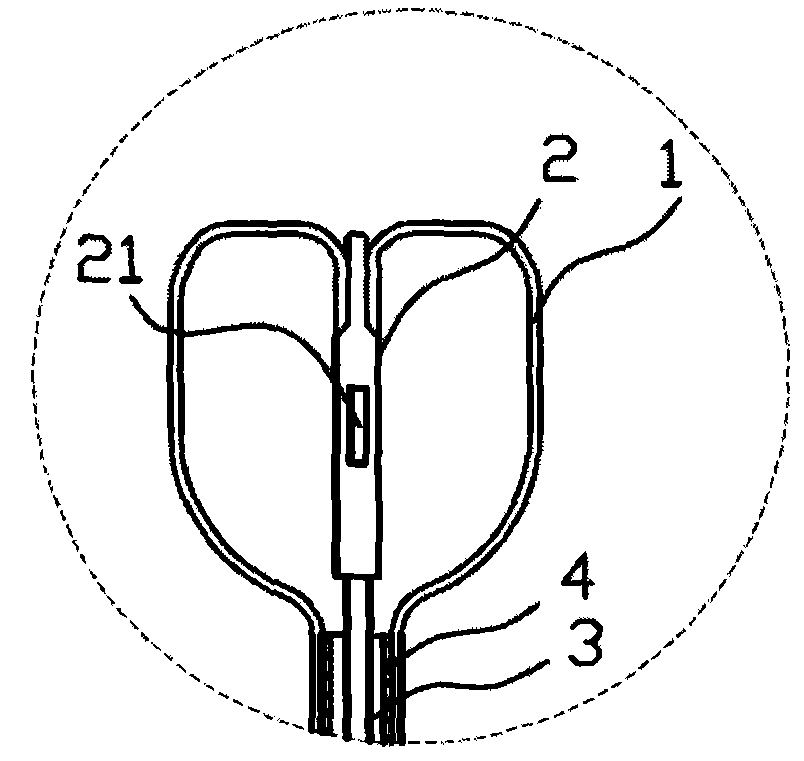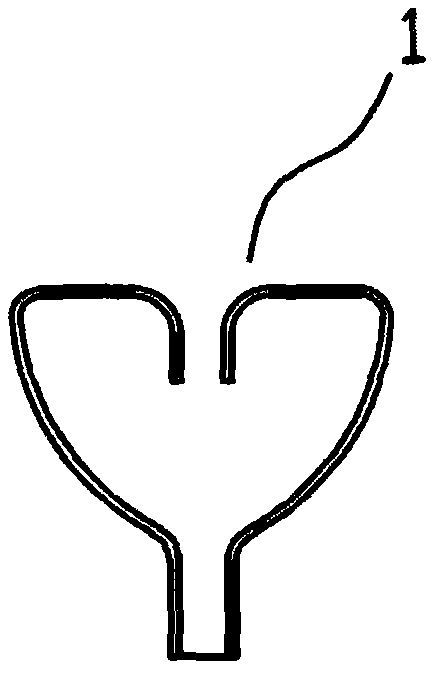Novel intraluminal tumor cryosurgery ablation catheter and operation method thereof
An ablation catheter and operation method technology, applied in the field of medical devices, can solve the problems of increasing the difficulty and risk of implantation, lack of rigidity of the balloon, and rupture of the balloon, so as to increase the cryoablation area, facilitate cryotherapy, reduce The effect of cold source pressure
- Summary
- Abstract
- Description
- Claims
- Application Information
AI Technical Summary
Problems solved by technology
Method used
Image
Examples
specific Embodiment 2
[0085] As shown in Figures 7 to 11, a new type of intracavitary tumor cryoablation catheter includes a balloon 1, an air intake line 3, a gas return line 4, a vacuum line 5, and a proximal end of the air intake line 3 that is sealed. The connected air inlet joint 6 , the return air joint 7 sealingly connected with the proximal end of the return air line 4 , and the vacuum joint 8 sealingly connected with the proximal end of the vacuum line 5 . The most distal end of the intracavitary tumor cryoablation catheter is the balloon 1, and the structure of the balloon 1 is the same as that of the specific embodiment 1, and will not be repeated here, as Figures 7a-7c As shown, the distal end of the balloon 1 is sealingly connected with the distal end of the buffer unit 2, for example, the distal end of the balloon 1 is turned inward first, and then the buffer unit 2 is inserted into the buffer unit 2. In the balloon 1, the distal end of the buffer unit 2 is sealed and connected to th...
specific Embodiment 3
[0087] As shown in Figures 12 to 16, a new type of intracavitary tumor cryoablation catheter includes a balloon 1, an air intake line 3, a gas return line 4, a vacuum line 5, and a proximal end of the air intake line 3 that is sealed. The connected air inlet joint 6 , the return air joint 7 sealingly connected with the proximal end of the return air line 4 , and the vacuum joint 8 sealingly connected with the proximal end of the vacuum line 5 . The most distal end of the intracavitary tumor cryoablation catheter is the balloon 1, and the structure of the balloon 1 is the same as that of the specific embodiment 1, and will not be repeated here, as Figures 12a-12c As shown, the distal end of the balloon 1 is sealingly connected with the distal end of the buffer unit 2, and a fixing sleeve 26 is arranged outside the connection, and the inner wall of the fixing sleeve 26 is in contact with the balloon 1 and the buffer unit 2. The outer wall of the connection point of the buffer u...
PUM
 Login to View More
Login to View More Abstract
Description
Claims
Application Information
 Login to View More
Login to View More - R&D
- Intellectual Property
- Life Sciences
- Materials
- Tech Scout
- Unparalleled Data Quality
- Higher Quality Content
- 60% Fewer Hallucinations
Browse by: Latest US Patents, China's latest patents, Technical Efficacy Thesaurus, Application Domain, Technology Topic, Popular Technical Reports.
© 2025 PatSnap. All rights reserved.Legal|Privacy policy|Modern Slavery Act Transparency Statement|Sitemap|About US| Contact US: help@patsnap.com



